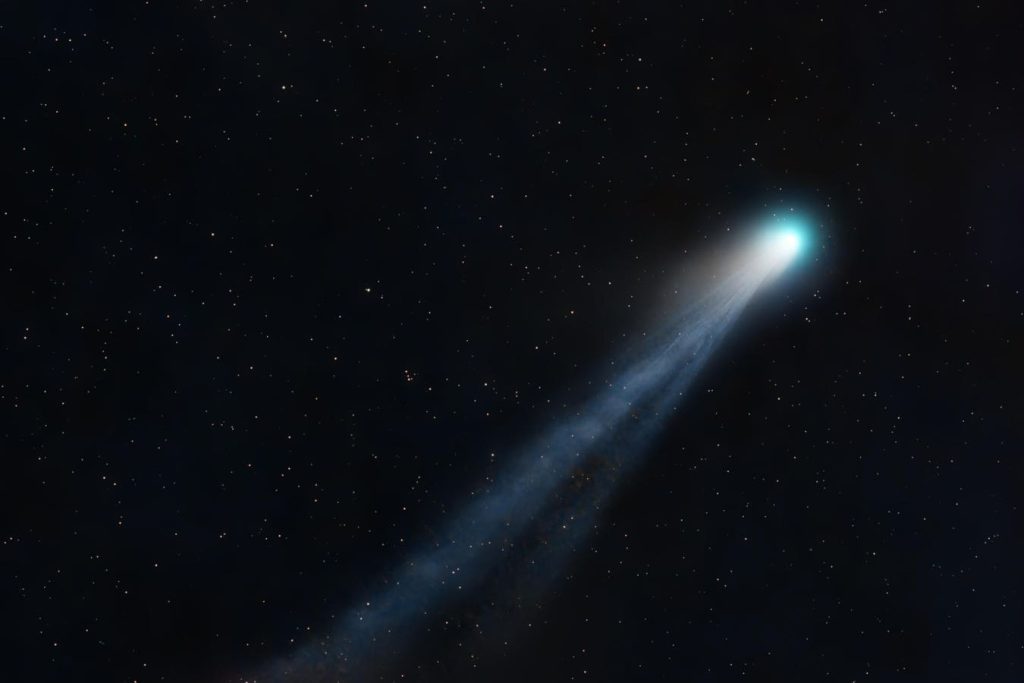As April begins, it is a great time to indulge in stargazing as some of the bright winter stars such as those in Orion, Gemini, and Taurus are still visible in the west. One notable event this week is the passing of comet 12/P Pons-Brooks, which will reach its brightest in the night sky. Additionally, Jupiter can be spotted closer to the horizon along with the winter stars, making it a perfect time to observe these celestial wonders before they disappear from view.
On Monday, April 15, the First Quarter Moon will be in Gemini, appearing half-lit as seen from Earth. This spectacle will be accompanied by the bright star Pollux in Gemini and Castor, forming the “twins” of the constellation. Pollux and Castor are located at 52 and 34 light-years from the solar system, respectively, and are considered among the brightest stars in the night sky.
Thursday, April 18, will bring the Moon and Regulus in conjunction, with the waxing gibbous moon shining 3.6 degrees from Regulus, the brightest star in the Leo constellation. Regulus, also known as the “star of the Lion’s breast”, is the 21st brightest star in the night sky, adding to the celestial spectacle of the week.
As the week progresses, on Saturday, April 20, Jupiter and Uranus will appear in conjunction with just 30 arc minutes between them. Visibility may require at least binoculars to observe the tiny vertical-ringed Uranus, which will be significantly dimmer compared to Jupiter. Comet Pons-Brooks will also be nearby, adding to the astronomical display.
On Sunday, April 21, Comet Pons-Brooks will reach its brightest point in the night sky. Being the twelfth comet ever discovered and similar in size to Halley’s Comet, Pons-Brooks has been visible in the west after dark all month but is now sinking into the horizon. Observers will need a clear sky, a view low to the southwest, and a pair of binoculars to catch a glimpse of this celestial rarity.
The spotlight constellation of the week is Leo, rising after sunset in the east and easily recognizable for its cluster of bright stars forming the shape of a lion. Notable stars in the constellation include Regulus and Denebola, both relatively close to our sun. In between these stars lies the M96 or “Leo I Group” of galaxies, offering a glimpse into deep space beyond our Milky Way.
Lastly, the Star of the Week is Wolf 359, a red dwarf star in the Leo constellation and one of the closest stars to Earth at 7.9 light-years away. Its proximity makes it one of the few stars that appear to change position with respect to the background stars. To make the most of these celestial events, viewers are advised to consult online planetariums for accurate times and locations specific to their viewing area.


